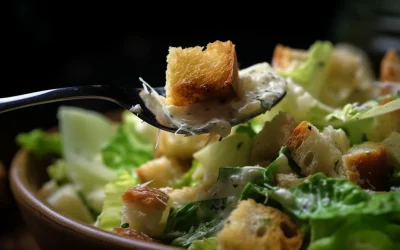Beef stew, one of the prides of Hungarian cuisine, is not just a delicious dish, but a piece of our history and culture. This slow, patiently prepared dish is a symbol of Hungarian hospitality and traditional flavors, which are passed down through generations in families. The tenderness of the beef, the thick, paprika-flavored sauce, and the harmony of the accompanying side dishes make this dish an unforgettable gastronomic experience that will make every Hungarian's heart beat faster and give foreigners a taste of the richness of Hungarian cuisine.
Beef stew is one of Hungary's best-known and most beloved dishes, the pride of Hungarian cuisine with its rich flavor and hearty speciality. But where does this delicacy come from?
Origin and history
The word pörkölt (stew in hungarian) is derived from the verb “pörkölni” (to roast in hungarian), which means the act of cooking by adding heat. The preparation of stew has its roots in Hungarian folk cuisine and became widespread during the Ottoman Empire. Due to the simplicity of the ingredients and the ease of preparation, this dish became a cornerstone of rural life. The hungarian stew was prepared at all times of the year, from different types of meat and vegetables, so beef stew is one of the most popular variations.
Traditional ingredients forthe hungarian beef stew
- Beef: Leg, neck or shoulder parts are most often used, as these cuts of meat have a rich flavor and require a long cooking time.
- Onion: The basis of the flavor of the stew is the onion, which is stewed in fat or oil until translucent.
- Paprika: Sweet paprika powder, which is essential for creating the color and flavor of stew.
- Spices: salt, pepper, garlic, and in many cases cumin were also added to the dishes.
- Tomatoes and peppers: These vegetables are mainly used fresh in the summer months and canned in the winter to enrich stews.
- Water or broth: The liquid in which the meat is cooked is essential for cooking.
- Hungarian beef-stew with gnocchi
- Hungarian beef-stew with cottage-cheese pasta
Here are some interesting facts about beef stew:
- The traditional hungarian recipe: Beef stew is a classic Hungarian dish based on beef, vegetables, and spices. The traditional recipe usually includes onion, paprika, salt, pepper, and possibly garlic.
- Beef stew variations: There are many variations of stew in different parts of the world. In addition to Hungary, it can also be found in Slovak, Croatian, Serbian and other Central European cuisines, but each enriches the recipe with its own local flavors.
- Cooking technique: Stew is usually prepared slowly, at a low temperature, which allows the meat to cook until tender and the different flavors to blend well. The preparation time is usually 1.5-2 hours.
- Serving: Beef stew is often served with pasta, such as nokedli, galuska or boiled potatoes. Many people also enjoy the stew sauce with toasted bread or fresh bread. It means mostly meat: In Hungary, stew is one of the most important meat-based dishes and is often served at festive meals and family gatherings.
- Seasoning: Most recipes recommend using paprika, which gives the stew its characteristic color and flavor. Spices can also include cumin, marjoram, or chili, depending on your taste.
- Healthy nutrition: If you choose the right beef (e.g., leaner cuts) and prepare it with lots of vegetables, stew can be a particularly nutritious dish.
Beef stew is a true Hungarian classic dish, which is not only delicious, but also an indispensable part of family gatherings and meetings with friends. Love and patience are important when preparing it, as these are what give the stew its true flavor and character. No matter how you prepare it, beef stew always reminds us of the richness and traditions of Hungarian gastronomy.














